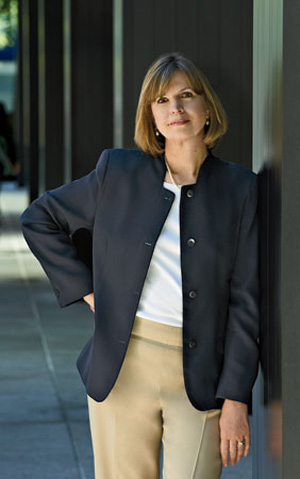RECORD Houses Connect to Their Surroundings—or Create Their Own Environment
T.S. Eliot may have thought April was the cruelest month, but here at Architectural Record, we look on the bright side because it's time for our annual RECORD Houses awards. Now in its sixth decade, the Houses issue is always full of surprises, with our selection of the best new projects by architects who experiment with form and materials on a domestic scale, often in spectacular settings.

Renzo Piano never designs houses (not counting the Diogene, a tiny—8 foot by 10 foot—prototype of a sustainable cabin he produced for Vitra last year). But now he has built a retreat in Colorado's Rocky Mountains for a private client. Despite the project's grand size, the architect liked the essential intimacy of creating spaces for human habitation, and he broke down the scale of the house into a village-like cluster to enable it to nestle into its mountain site.
With a design far more modest in size but in an equally stunning location, San Francisco architect Anne Fougeron ramped up the drama of the Buck Creek House by cantilevering the master bedroom off the Big Sur cliff where it perches, high above the Pacific. And Rick Joy—an impresario of houses that both stand up to and fit in with the harsh beauty of the American West—has built a dwelling in Sun Valley, Idaho, that artfully juxtaposes stone, metal panels, and wood against a rugged backdrop.
Other houses in this issue look inward, creating their own force fields of privacy along with tension between inside and out. The concrete slabs of Brazilian architect Marcio Kogan's Casa P seem to float within a magical walled garden in São Paulo, while lush greenery embraces the hard-edged concrete forms of Sebastian Mariscal's Phoenix House in California. Estudio Entresito's dynamic white dwelling snakes through a suburban Madrid garden, and Paul de Ruiter's Villa Kogelhof looks as if it just landed on a windswept moonscape in the photographs, though in fact the Dutch site is currently being reforested. And in upstate New York, Brad Cloepfil has designed a house for art collectors that seems to disappear altogether, its exterior walls dematerializing when the work of video artist Doug Aitken is projected on them.
Fantastic art, gorgeous landscapes, innovative design—these, we know, are dream houses for most people, and nothing like the housing stock in which most of America lives. We do know the average size of new houses is ballooning again—after a recession-induced slowdown—with the mean square footage at 2,679 in 2013, up from 2,362 in 2009, according to the National Association of Home Builders (NAHB). New houses tend to have more bedrooms (almost half of them have four), more bathrooms, and a “great room.” But while houses are getting bigger—and more expensive—they are not getting better. Sustainability, for example, does not rank high on buyers' checklists, except for features that save energy costs. “We have not seen a strong demand just out of pure environmental responsibility,” says NAHB's chief economist, David Crowe.
Still, we believe many of the ideas presented in the following pages have the power to inspire architects who are designing houses at every scale and for every budget. The connection to the surroundings, the use of honest materials, a functional plan, and the pursuit of refined detailing are first principles found in the best architecture. And the daring design and superior craftsmanship reflected in RECORD Houses—as we know from our long history of publishing the best of the best—can influence the future of how Americans build and live.







